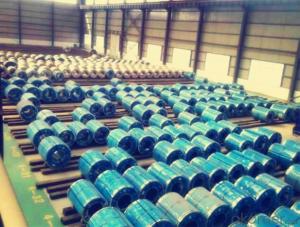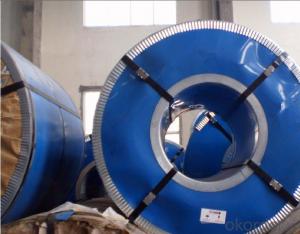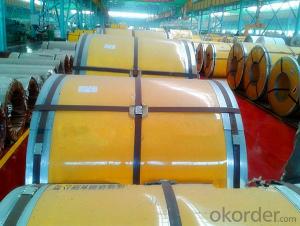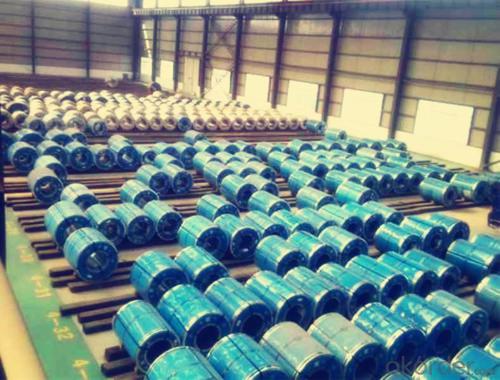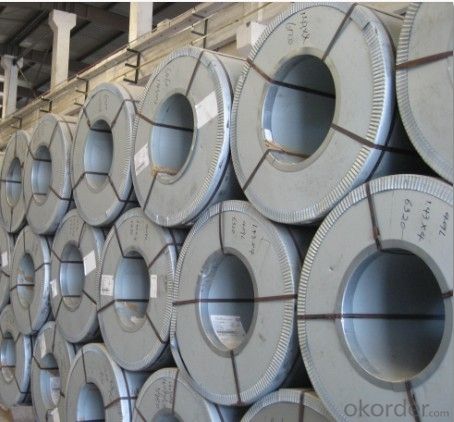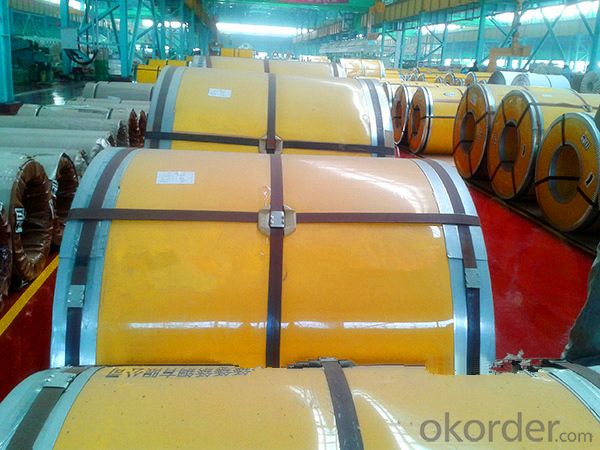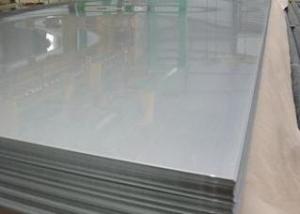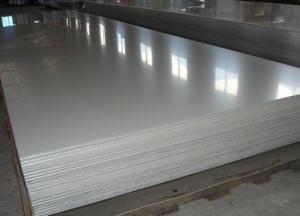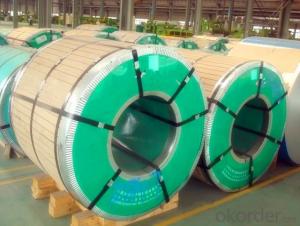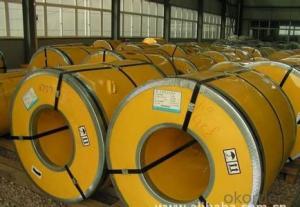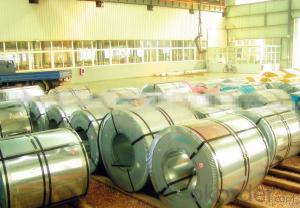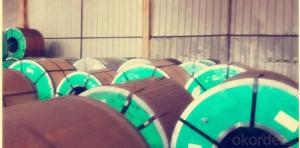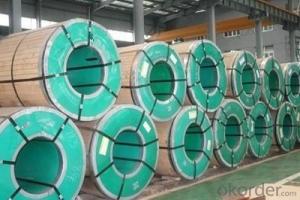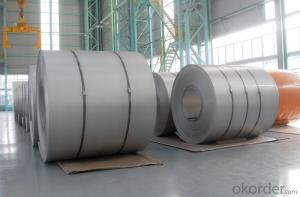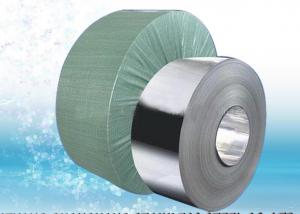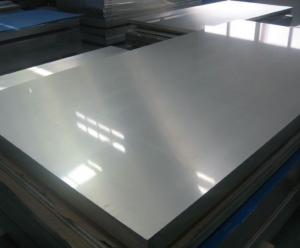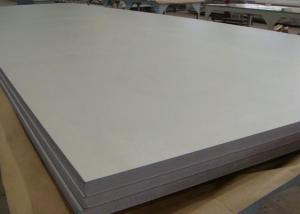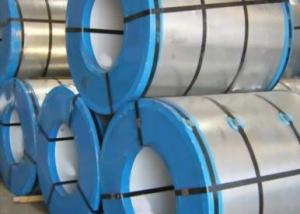Stainless Steel Coil Annealing and Pickling No.1 Finish Hot Rolled
- Loading Port:
- Guangzhou
- Payment Terms:
- TT OR LC
- Min Order Qty:
- 100 m.t.
- Supply Capability:
- 8000 m.t./month
OKorder Service Pledge
OKorder Financial Service
You Might Also Like
Hot / Cold Rolled Stainless Steel Coil
1. | Item | STAINLESS STEEL COIL | ||
2. | Standard | ASTM,AISI,GB,JIS,SUS,EN,DIN,etc. | ||
3. |
Material | 200 series | 300 series | 400 series |
201,202 | 300,301,304,304L,309S,310S,316Ti,316L, 317L,321,329,329LA,329LD | 409,410,430,430LX,600,601 | ||
4. |
Specification | Thickness | 0.1mm-200mm | |
Width | 1000mm-3000mm | |||
Length | 1m-12m | |||
5. | Surface | No.1,No.4,No.5,BA,2B,hair line,embossed,mirror finish,etc | ||
6. | Application | Stainless steel coils s are widely used in: 1:Chemical industry equipment,industrial tanks 2:Medical instruments,tableware,kitchen utensil,kitchen ware. 3:Architectural purpose,milk or food processing facilities. 4:Hospital equipment,interior exterior decoration for building 5:Architectural purposes,escalators,kitchen ware,vehicles. Or they can be made as your requirement. | ||
7. | Package | Standard export package. | ||
8. | Export to | Asia,Africa,Europe,Middle East,South and North America,Oceania,etc | ||
9. | Contact | please feel free to contact CNBM | ||
- Q: Can stainless steel strips be painted?
- Yes, stainless steel strips can be painted. However, it is important to properly prepare the surface by cleaning it thoroughly and applying a suitable primer before painting to ensure good adhesion and long-lasting results.
- Q: Can stainless steel strips be used in solar panels?
- Yes, stainless steel strips can be used in solar panels. Stainless steel is a durable and corrosion-resistant material, making it suitable for various applications, including solar panels. It provides structural support and helps maintain the integrity of the solar panel assembly. Stainless steel strips are often used for framing and mounting purposes in solar panel installations. They offer high strength and stability, ensuring the panels remain securely in place, even in harsh weather conditions. Additionally, stainless steel's resistance to corrosion makes it ideal for outdoor applications, as it can withstand exposure to UV radiation, moisture, and other environmental factors commonly encountered in solar panel systems.
- Q: Can stainless steel strips be used in telecommunications applications?
- Yes, stainless steel strips can be used in telecommunications applications. Stainless steel is known for its excellent corrosion resistance and durability, making it suitable for various industries, including telecommunications. It can be used for a wide range of applications, such as cable trays, cable conduits, antenna brackets, enclosures, and support structures. Stainless steel strips are often preferred in telecommunications due to their high strength-to-weight ratio, resistance to extreme temperatures, and electromagnetic interference (EMI) shielding capabilities. Additionally, stainless steel strips can be easily fabricated and customized to meet specific requirements, making them a versatile choice for telecommunications applications.
- Q: How do stainless steel strips resist embrittlement?
- Stainless steel strips resist embrittlement due to their unique composition and structure. The primary factor that contributes to their resistance is the presence of chromium in stainless steel, which forms a thin, protective oxide layer on the surface. This oxide layer acts as a barrier, preventing oxygen and other corrosive agents from reaching the underlying metal. Embrittlement is a phenomenon where a material becomes brittle and prone to cracking or fracture under certain conditions. In stainless steel strips, embrittlement can occur due to various factors such as exposure to high temperatures, hydrogen absorption, or prolonged exposure to corrosive environments. The chromium content in stainless steel enhances its resistance to embrittlement by forming a stable and dense oxide layer. This layer acts as a protective barrier, preventing the diffusion of hydrogen and other embrittling elements into the metal matrix. Hydrogen embrittlement, in particular, is a common concern in many metals, but stainless steel's oxide layer effectively blocks hydrogen atoms from penetrating the material. Furthermore, stainless steel also contains other alloying elements such as nickel and molybdenum, which further enhance its resistance to embrittlement. These elements contribute to the formation of a stable microstructure, reducing the susceptibility to embrittlement. In addition to its chemical composition, stainless steel's grain structure also plays a crucial role in its resistance to embrittlement. Stainless steel strips are typically manufactured using processes that promote a fine and uniform grain structure, which enhances their mechanical properties and reduces the risk of embrittlement. Overall, the combination of a protective oxide layer, alloying elements, and a refined grain structure enables stainless steel strips to resist embrittlement and maintain their mechanical strength even in challenging environments.
- Q: How do stainless steel strips handle exposure to solvents?
- Stainless steel strips possess exceptional resistance to solvents, renowned for their ability to endure exposure to various solvents without significant harm or corrosion. The inclusion of a substantial amount of chromium in the composition of stainless steel results in the formation of a protective layer known as chromium oxide, which acts as a barrier against solvents. This protective layer prevents solvents from infiltrating the surface of the steel and causing any detrimental effects. Moreover, stainless steel strips exhibit low reactivity with solvents, rendering them suitable for environments where chemical exposure is commonplace. They exhibit resistance to numerous organic solvents, including alcohols, acetone, and hydrocarbons, as well as certain inorganic solvents such as acids and bases. It is crucial to note that although stainless steel strips generally possess exceptional resistance to solvents, their performance may vary depending on the specific type and concentration of the solvent, as well as the duration of exposure. In certain instances, prolonged exposure to aggressive solvents or high concentrations may result in slight discoloration or etching on the surface of the stainless steel. To ensure optimal performance and longevity, it is advisable to select the appropriate grade of stainless steel for particular solvent applications. Seeking guidance from stainless steel manufacturers or industry experts can offer valuable assistance in selecting the most suitable stainless steel grade for a given solvent environment. Regular cleaning and maintenance, such as promptly wiping away any spilled solvents and avoiding abrasive cleaning agents, can also aid in preserving the integrity and appearance of stainless steel strips exposed to solvents.
- Q: What are the recommended packaging methods for 111 stainless steel strips?
- Different customers or manufacturers may have varying requirements and preferences for packaging 111 stainless steel strips. However, there are several commonly suggested packaging methods for stainless steel strips: 1. Wooden Crates: To ensure stability and protection during transportation, stainless steel strips can be placed in wooden crates. These crates often have foam or other cushioning materials inside to prevent scratching or damage to the strips. 2. Cardboard Boxes: If the quantity is small or the distance is short, stainless steel strips can be packed in sturdy cardboard boxes. These boxes should be strong enough to handle the weight and size of the strips and may be lined with plastic or paper to guard against moisture. 3. Plastic Wrapping: For storage or bulk transportation, stainless steel strips can be individually wrapped in plastic or shrink-wrapped. This creates a barrier against moisture, dust, and other contaminants. 4. Metal Banding: To secure and bundle the stainless steel strips, metal banding or strapping can be used. This method ensures that the strips remain tightly packed together during transit, reducing the risk of damage or shifting. 5. Vacuum Sealing: In specific situations, stainless steel strips may require airtight packaging to protect against corrosion or oxidation. Vacuum sealing the strips in moisture-resistant bags or pouches can establish a protective barrier and extend the product's shelf life. It's important to consider the specific storage or transportation conditions, such as temperature, humidity, and duration, when determining the recommended packaging method. It is advisable to consult the manufacturer or supplier for their specific recommendations based on the characteristics of the stainless steel strips and their intended use.
- Q: Can stainless steel strips be used in the oil and gas industry?
- Yes, stainless steel strips can be used in the oil and gas industry. Stainless steel is known for its corrosion resistance, high strength, and durability, making it suitable for various applications in this industry. Stainless steel strips are commonly used in the fabrication of pipelines, storage tanks, heat exchangers, and other equipment required for oil and gas exploration, production, and refining processes. The resistance to corrosion is particularly important in the oil and gas industry due to the presence of corrosive substances such as sulfur compounds and saltwater. Stainless steel strips can withstand these harsh environments and maintain their integrity, ensuring the safety and reliability of the equipment used in this industry.
- Q: Are stainless steel strips easy to clean?
- Yes, stainless steel strips are easy to clean. Stainless steel is known for its non-porous and smooth surface, which makes it resistant to stains and easy to wipe clean. You can simply use a mild detergent or soap and water to clean stainless steel strips. Additionally, stainless steel is also heat-resistant, so you can use various cleaning methods like steam cleaning or even sterilizing them in boiling water. Overall, stainless steel strips are a low-maintenance material that is durable and easy to keep clean.
- Q: Are stainless steel strips suitable for brewery equipment?
- Yes, stainless steel strips are suitable for brewery equipment. Stainless steel is a popular material choice for brewery equipment due to its excellent corrosion resistance, durability, and hygienic properties. Stainless steel strips can be used to fabricate various components of brewery equipment such as fermentation tanks, brewhouses, piping, and fittings. The high resistance to rust and corrosion ensures that the equipment remains sanitary and does not contaminate the brewing process. Additionally, stainless steel is easy to clean and maintain, which is essential for ensuring the quality and consistency of the beer produced.
- Q: Can stainless steel strips be used for medical implants?
- Medical implants can indeed utilize stainless steel strips. Stainless steel is widely employed in the medical industry due to its impressive mechanical properties, resistance to corrosion, and ability to coexist with living tissue. It can be easily molded into strips or other desired shapes to cater to the specific needs of medical implants. Orthopedic implants such as plates, screws, and wires, as well as cardiovascular implants like stents and pacemakers, frequently employ stainless steel strips. The material's capacity to endure sterilization processes and its long-lasting durability make it an appropriate choice for medical implants. However, it is crucial to carefully consider the particular grade of stainless steel employed, along with the design and surface finish of the strips, in order to guarantee compatibility with the human body and minimize the risk of adverse reactions or complications.
Send your message to us
Stainless Steel Coil Annealing and Pickling No.1 Finish Hot Rolled
- Loading Port:
- Guangzhou
- Payment Terms:
- TT OR LC
- Min Order Qty:
- 100 m.t.
- Supply Capability:
- 8000 m.t./month
OKorder Service Pledge
OKorder Financial Service
Similar products
Hot products
Hot Searches
Related keywords
